For this creature, a normal bodily function is pure bliss
By Keith Austin
If there’s a word that’s guaranteed to pique my interest it’s “rainforest”.
Combine that with “Costa Rica” and it’s simply a case of “where do I sign up?”
Which is why day six of our 14-day Central America & Panama Canal Pathfinder cruise on the Seabourn Ovation finds me sitting in a coach on the dock at Puerto Limon, salivating over the prospect of a shore excursion to the Veragua Rainforest Eco Adventure Park.
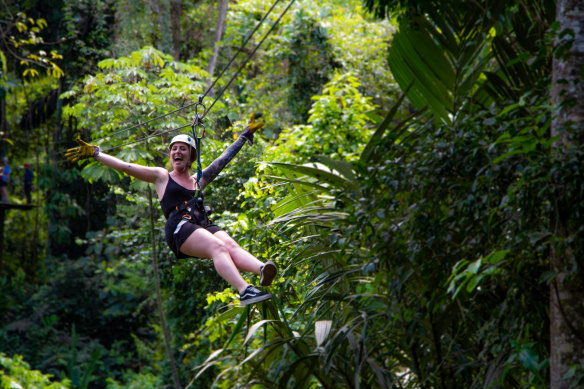
Swinging through the trees.
It’s about an hour’s drive to the park and the bustling, freight-heavy traffic of this port city soon drops away to be replaced by small colourful villages and bougainvillea-peppered tropical vegetation here in the foothills of the Talamanca Mountain range.
The logo of the adventure park sports a stylised image of a sloth and so it’s fitting that, bumping up the gravel road to the centre, the first creature we come across is one of these cutely slow-moving mammals.
How the guide spots it is anyone’s guess, as it is tucked away at the very top of a towering tree just off the road. With the naked eye it could be anything – a bird’s nest, a clump of leaves, an errant Aldi bag, you name it.
Luckily, I have a camera with a good zoom, and it brings the object of our interest into fairly good focus. Turned away from us and curled up into a tight ball, he or she looks like a hairy bowling ball caught in the cleft of two branches.
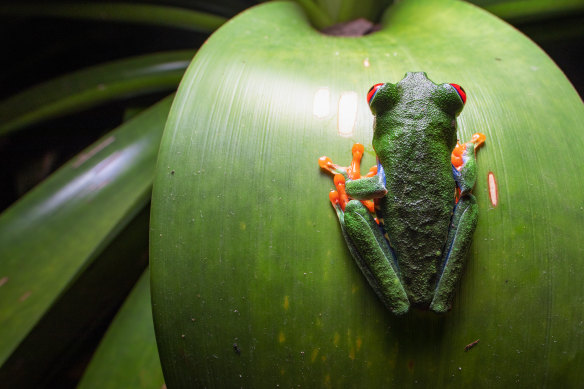
Some creatures can be hard to spot.
Our guide is very knowledgeable about sloths and, among plenty of other fascinating information, she comes out with this pearler: sloths only climb down from their eyries every seven or so days to… poo.
Later research reveals that they push out a stool so big that they lose one-third of their body weight in the process and that half of them die doing this – because that’s when they’re vulnerable to predators.
Just as an FYI, one member of the Sloth Conservation Foundation, based in the UK, is quoted online thus: “If you’ve ever seen a sloth poo you could only ever describe it as pure bliss. They tip their heads back and smile.”
Normally I’m not one for anthropomorphising but that I can believe.
Veragua is a 1375-hectare private mountain reserve which, in turn, is surrounded by rainforest, and borders the La Amistad International Park, the largest nature reserve in Central America.
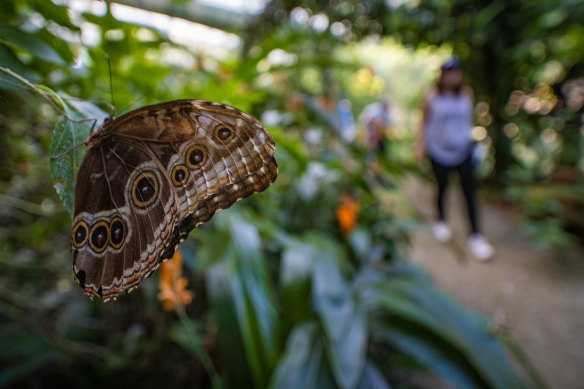
This biodiversity hotspot boasts 1105 types of butterfly.
The main “human” section of Veragua is a low-key building hub which sports a canteen, a souvenir shop, exhibition halls, and lecture rooms. From this, various paths – and a gondola ride down to a small but pretty waterfall – radiate out through the rainforest.
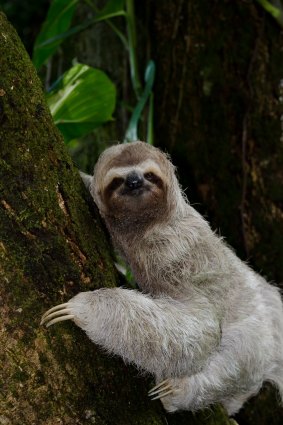
Sloths only come to the ground for one purpose.Credit: iStock
This is a biodiversity hotspot which boasts 1105 types of butterfly, 808 beetles, 67 amphibians, 70 reptiles, 378 birds and more than 100 mammals. Of course, like dolphin or whale-watching cruises, there’s never any certainty of encountering any of them.
In the few hours we spend here our guided tour group does catch sight (and sound) of a troop of howler monkeys across a small valley, a yellow-billed toucan, plenty of lizards, the wonderful blur of hummingbirds and a line of ants that look capable of carrying off a small child.
There are also several vivariums where you can peer at live specimens behind glass — probably the only way you’re going to get to see a boa constrictor or a northern bird snake or a striped poison dart frog (sexy but deadly).
A favourite destination for everyone is the butterfly sanctuary, where these beautifully coloured, iridescent insects gorge on ripe bananas and honey and, for once, happily pose for photographs.
Just beyond this is a garden strewn with plants that attract hummingbirds. They, sadly (and trust me as I tried to will it so), do not pose for photographs but watching for their blur and listening to the faint, low buzz of their wings is worth a few minutes of anyone’s time.
To my mind the best, and somewhat unsung, hero of such a tour is the rainforest itself, teeming as it is with soaring trees and tangles of vines and palms and creepers and brightly coloured flowers.
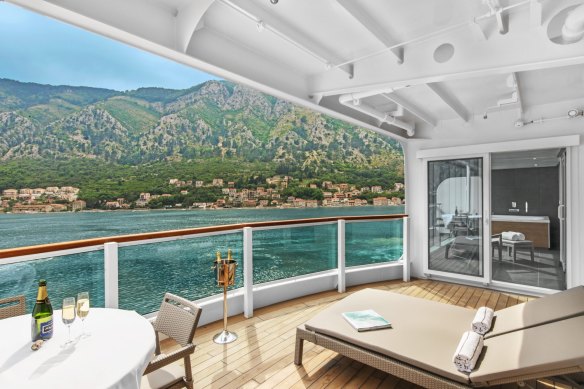
Onboard Seabourn Ovation.
There’s an exotic, drenched fecundity that’s perhaps exemplified in the fruit of the carludovica palmata. Also known, for obvious reasons, as the Panama hat palm, these flower-like fruit unfold in blood-red blooms that look like they should be bursting out of someone’s stomach on a spaceship.
On the way out of the park, the sloth is nowhere to be seen. This can only mean one of two things; fingers crossed it went well.
The writer travelled as a guest of Seabourn Cruise Line.
THE DETAILS
Seabourn Cruise Line’s 14-Day Central America and Panama Canal Pathfinder itinerary will set sail again at the start of December, 2023, on the Seabourn Quest. From $9499 for an Ocean View suite and $11,499 for a Verandah suite, a person, twin share. See seabourn.com
SHORE EXCURSION
The Veragua Rainforest Eco-Adventure tour costs $US149 ($221)and includes a sandwich lunch and soft drinks at the park.
Sign up for the Traveller Deals newsletter
Get exclusive travel deals delivered straight to your inbox. Sign up now.